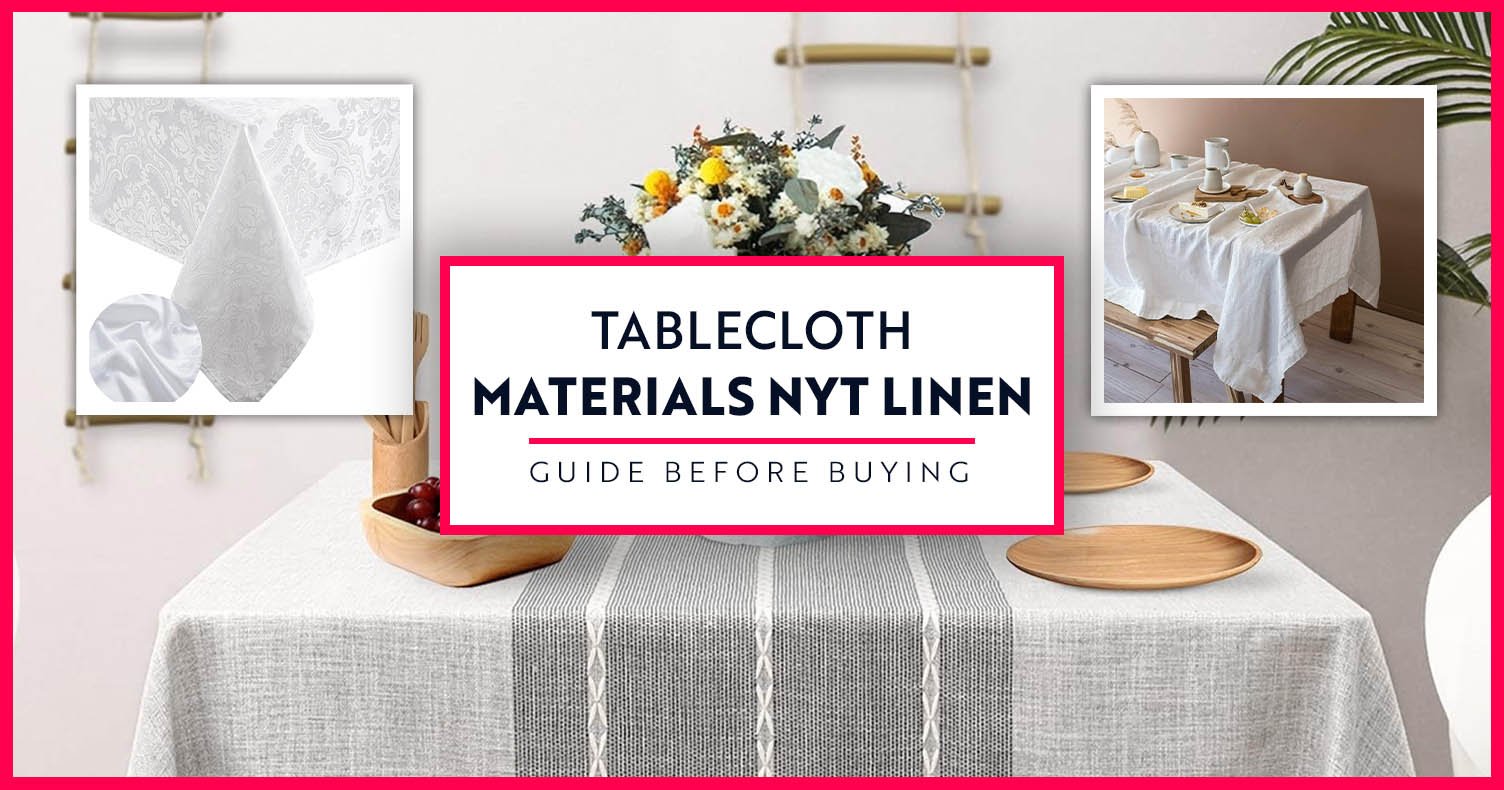
Tablecloth Material nyt : Linen Review
Linen is one of the most revered fabrics in the world, known for its elegance, durability, and natural beauty. Used for centuries, linen tablecloths are a staple in both everyday dining and special occasions. This article delves into the characteristics, benefits, drawbacks, care instructions, and reasons for choosing linen tablecloths, providing a comprehensive understanding of why linen is a preferred material for many.
What is Linen?
Linen created from the flax plant, by using flax plant fabric. Interesting fact is linen is oldest product in the world, it has a history of thousands years old. The production of linen involves harvesting the flax plants, extracting the fibers, and spinning them into yarn before weaving them into fabric. This process results in a fabric that is strong, breathable, and has a distinctive texture.
Tablecloth Material nyt Characteristics
1. Natural and Sustainable:
- Eco-Friendly: Linen is biodegradable and requires fewer resources to produce compared to synthetic fabrics. It is often grown without the use of harsh chemicals and pesticides.
- Natural Fibers: Linen is made from flax fibers, which are naturally strong and durable.
2. Aesthetic Appeal:
- Elegant Appearance: Linen has a natural luster and a slightly textured surface that adds a touch of sophistication to any table setting.
- Variety of Weaves and Finishes: Available in various weaves, such as plain, damask, and jacquard, linen can be finished to achieve different looks and feels.
3. Durability:
- Long-Lasting: Linen fibers are known for their strength, making linen tablecloths highly durable and able to withstand frequent use and washing.
- Becomes Softer with Use: Unlike many fabrics that wear out over time, linen becomes softer and more comfortable with each wash.
4. Breathability and Absorbency:
- Breathable: Linen allows air to flow freely, making it a comfortable choice for warm weather and indoor use.
- Highly Absorbent: Linen can absorb a significant amount of moisture without feeling damp, which is useful for dining situations involving spills.
Benefits of Linen Tablecloths
1. Elegance and Versatility:
- Timeless Beauty: Linen tablecloths add a touch of class to any dining table, whether it’s a casual meal or a formal event.
- Versatile Design: Suitable for a wide range of occasions, from everyday dining to weddings and holiday celebrations.
2. Comfort:
- Comfortable: The fabric’s breathability and moisture-wicking properties ensure a comfortable dining experience.
3. Environmental Benefits:
- Sustainable Production: Linen production has a lower environmental impact compared to synthetic fabrics.
- Biodegradable: At the end of its life cycle, linen will decompose naturally, reducing waste.
4. Practicality:
- Stain Resistance: While not completely stain-proof, linen’s ability to absorb moisture means that stains are less likely to spread and can often be treated effectively.
- Heat Resistance: Linen can withstand high temperatures, making it suitable for hot dishes and serving ware.
Drawbacks of Linen Tablecloths
1. Wrinkling:
- Prone to Wrinkles: One of the most common complaints about linen is its tendency to wrinkle. While some appreciate the natural, relaxed look, others may find it requires frequent ironing.
2. Care and Maintenance:
- Special Care: Linen requires careful washing and ironing to maintain its appearance. It is best washed on a gentle cycle and ironed while slightly damp.
- Initial Stiffness: New linen can feel stiff at first, but it softens with use and washing.
3. Cost:
- Expensive: High-quality linen can be more expensive than other tablecloth materials. However, its durability and timeless appeal can justify the investment.
How to Care for Linen Tablecloth Material nyt
- Washing:
- Most linen tablecloths can be machine washed on a gentle cycle using mild detergent. Avoid using bleach or harsh chemicals.
- Wash in cold or lukewarm water to prevent shrinking and maintain the fabric’s strength.
- Drying:
- Line Dry: It is best to line dry linen tablecloths to preserve their shape and texture. Avoid prolonged exposure to direct sunlight.
- Tumble Dry: If using a dryer, choose a low heat setting and remove the tablecloth while it is still slightly damp.
- Ironing:
- Iron While Damp: For best results, iron linen tablecloths while they are still slightly damp. Use a steam iron on a medium to high setting.
- Spray with Water: If the tablecloth is dry, spray it lightly with water before ironing to ease out wrinkles.
- Storage:
- Fold Carefully: Store linen tablecloths folded neatly in a cool, dry place. Try to avoid hanging the linen cloth because of stretching will happened.
- Use Cotton Bags: Store in cotton bags to protect from dust and allow the fabric to breathe.
Why Choose Linen Tablecloths?
Tablecloth Material nyt “linen” add a touch of natural elegance and sophistication to any table setting. Their unique texture and sheen make them stand out. Despite their initial cost, linen tablecloths are an investment. Their durability ensures they can be used for many years, often looking better with age.
Linen is breathable, hypoallergenic, and comfortable, making it an excellent choice for family meals and special occasions alike. Choosing linen supports sustainable agriculture and reduces environmental impact. Linen’s biodegradability also means it won’t contribute to long-term waste.
Conclusion
Linen tablecloths are a timeless, elegant choice that brings numerous benefits to any dining experience. Their natural beauty, durability, and versatility make them suitable for a wide range of occasions, from casual family dinners to formal events. While linen requires a bit more care and comes with a higher initial cost, its benefits in terms of aesthetics, comfort, and sustainability make it a worthwhile investment.
By understanding the characteristics and proper maintenance of linen tablecloths, you can enjoy their beauty and functionality for many years to come.
